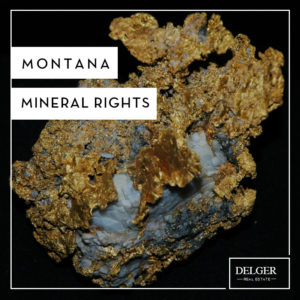Montana Mineral Rights
 Mineral rights are considered real property in Montana and are bought and sold using the same methods as those used to buy and sell real property. The surface rights to a property, and the mineral rights to a property may be bought and sold seperately from each other. Mineral rights are acquired by purchasing them from the owner or by renting or leasing them from the state or federal government.
Mineral rights are considered real property in Montana and are bought and sold using the same methods as those used to buy and sell real property. The surface rights to a property, and the mineral rights to a property may be bought and sold seperately from each other. Mineral rights are acquired by purchasing them from the owner or by renting or leasing them from the state or federal government.
Mineral Rights gives the owner certain specified privileges, such as to extract, sell, and receive royalties with respect to minerals associate with a property.
If the mineral rights and surface rights are intact for a property, the deed to the property will indicate that ownership of the property is Fee Simple or Fee Simple Absolute.
A Split Estate occurs when the mineral rights are owned by someone other than the surface owner. One party may own the right to farm the land, build a house, or graze cattle, but another party owns the right to drill for the underlying oil or gas.
Is This a Concern for Owning Property in Montana?
In Montana, mineral rights take precedence over surface rights. When purchasing property, especially property with a large amount of acreage it is important to understand who owns the mineral rights and consider the potential for the exploration or extraction of minerals on the property. The value of minerals rights varies greatly across the Montana. The northeastern portion of Montana saw a lot of oil and gas exploration as part of the Bakken Shale formation. Mineral rights in this area could be valuable, and the probability of exploration or extraction is higher than other areas of the state.
Zoning and other restrictions often limit the ability of Mineral Rights holders to explore or extract minerals, and the mineral rights have limited if any value.
J.M. Huber Corp. announced in 2001 its intentions to drill for coalbed methane after the company leased the mineral rights under 18,000 acres of land centered around Bozeman Pass in Gallatin County. The Gallatin County Commission initiated emergency zoning to prevent CBM from drilling on the then-unzoned Bozeman Pass. Landowners in the Bozeman Pass area established their own zoning district that restricts any drilling and mining there. Ultimately, J.M. Huber Corp. gave up on their attempts to extract resources from this area.
When purchasing property you need to consider zoning and other restrictions when evaluating surface rights and mineral rights. Buyers should also be aware of Montana Water Rights.
How to Find Mineral Rights in Montana
To find out who owns mineral rights, you will need to do a property search. Because mineral rights can be severed from the rest of the property, you will need to search specifically for who owns the mineral rights. The deed to the property is a good place to start researching mineral rights for property in Montana. For surface owners, if the deed says ownership of the property is fee simple or fee simple absolute, that means the surface and mineral rights are intact unless otherwise indicated in the chain of title.
Use a plat map to determine the legal description of the property in question. Call the county treasurer in the county in which the property is located. Provide the clerk with the legal description of the property. The county clerk’s office will research the property’s ownership and, for a small fee, provide you with a copy of the property deed. The ownership information on the deed will supply the contact information for the owners of the mineral and surface rights.
Examine the title of the property. Determine if the land in question is a split estate, which occurs when one individual or company owns the surface rights and another owns the mineral rights to a piece of property.
If initial searches are unsuccessful, some title companies or landmen may provide assistance for a fee. Make sure that surface and mineral rights ownership are included in the title search.
Category : Ranch Articles

